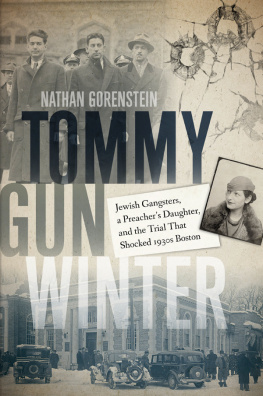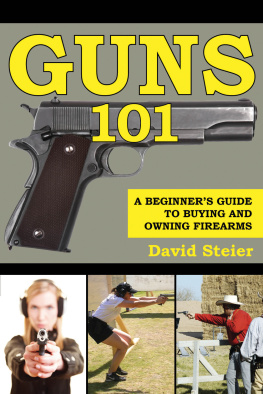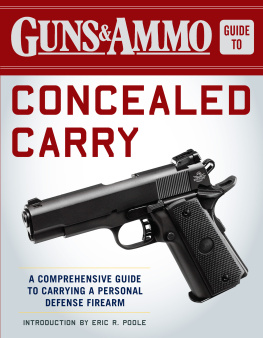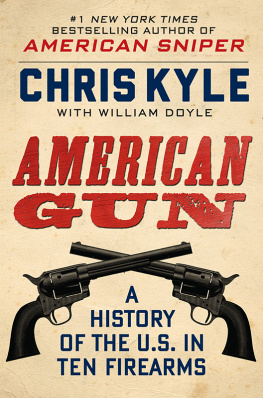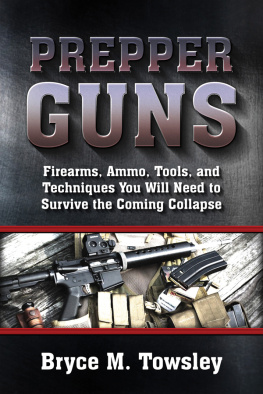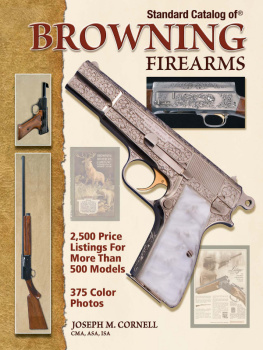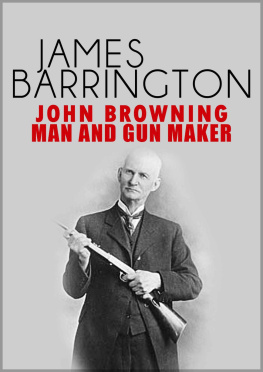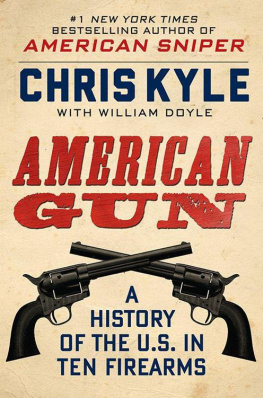Contents
Guide
The Guns of John Moses Browning
The Remarkable Story of the Inventor Whose Firearms Changed the World
Nathan Gorenstein
Beautifully crafted Gorenstein brilliantly illuminates, so we mortals can understand, how great inventors think and work. JIM RASENBERGER, author of Revolver
More Praise for The Guns of John Moses Browning
Nathan Gorenstein goes beyond the bounds of a typical biography. He masterfully weaves the story of John Moses Brownings life with the social, cultural, and political impact of his inventions. Peer inside the mind of a genius whose work, like that of fellow titans Henry Ford and Steve Jobs, transcended an industry and revolutionized the world. The scale is epic, but the books best moments are the most relatable. A simple, unassuming man was driven not by fame or fortune but, rather, an innate desire to overcome obstacles that perplexed himself and his peers. The story and its ramifications are truly remarkable.
Jeffrey Richardson, author of Colt: The Revolver of the American West
If you already know the difference between a locked breech and blowback pistol, heres a chance to understand the life of historys premier gun designer. If you havent encountered those phrases before, heres a chance to see how a guy growing up poor in a remote Western village became one of the greatest mechanical engineers of his time, transforming the world. This very engaging biography of one of Americas most creative minds is set in an era just remote enough to startle modern readers.
Clayton E. Cramer, author of Lock, Stock, and Barrel: The Origins of American Gun Culture
The perfect combination of technological and social historya feat rarely attempted and even more rarely achieved with such thorough attention to detail.
Ashley Hlebinsky, former cohost of Discovery Channels Master of Arms and founding president, Association of Firearms History and Museums
Nathan Gorensteins The Guns of John Moses Browning tells the surprising story of a genius inventor who changed the course of American history. It will captivate readers interested in firearms and the process of innovation. I highly recommend it.
Paul M. Barrett, author of GLOCK: The Rise of Americas Gun

Scribner
An Imprint of Simon & Schuster, Inc.
1230 Avenue of the Americas
New York, NY 10020
www.SimonandSchuster.com
Copyright 2021 by Nathan Gorenstein
All rights reserved, including the right to reproduce this book or portions thereof in any form whatsoever. For information, address Scribner Subsidiary Rights Department, 1230 Avenue of the Americas, New York, NY 10020.
First Scribner hardcover edition May 2021
SCRIBNER and design are registered trademarks of The Gale Group, Inc., used under license by Simon & Schuster, Inc., the publisher of this work.
For information about special discounts for bulk purchases, please contact Simon & Schuster Special Sales at 1-866-506-1949 or .
The Simon & Schuster Speakers Bureau can bring authors to your live event. For more information or to book an event, contact the Simon & Schuster Speakers Bureau at 1-866-248-3049 or visit our website at www.simonspeakers.com.
Jacket design by Jaya Miceli
Jacket photograph of the First Public Demonstration of the Browning Automatic Rifle in Washington, D.C., 1918, Source: The John M. Browning Firearms Museum
Library of Congress Cataloging-in-Publication Data
Names: Gorenstein, Nathan, author.
Title: The guns of John Moses Browning : the remarkable story of the inventor whose firearms changed the world / Nathan Gorenstein. Description: First Scribner hardcover edition. | New York : Scribner, 2021. | Includes bibliographical references and index. Identifiers: LCCN 2021005893 (print) | LCCN 2021005894 (ebook) | ISBN 9781982129217 (hardcover) | ISBN 9781982129231 (ebook) Subjects: LCSH: Browning, John M. (John Moses), 18551926. | Firearms designersUnited StatesBiography. Classification: LCC TS533.62 .B76 2021 (print) | LCC TS533.62 (ebook) | DDC 683.40092 [B]dc23
LC record available at https://lccn.loc.gov/2021005893
LC ebook record available at https://lccn.loc.gov/2021005894
ISBN 978-1-9821-2921-7
ISBN 978-1-9821-2923-1 (ebook)
AUTHORS NOTE
O f all the mechanical devices invented since the Industrial Revolution, only firearms indisputably occupy both ends of a moral spectrum starting at good and ending at evil. A gun can save a life, or take a life, and can do either, or both, with a single shot in a single instant. Whether that outcome is laudable or deplorable depends on who asks and answers the question and whether youre in front of the muzzle or have your finger on the trigger. Pistols, rifles, and machine guns can defend a nation and liberate a people, or conquer a land and slaughter its inhabitants. A shotgun or the obsolete lever-action rifle can put food on the table, or wipe out a species. One is hard-pressed to cite a major historic event since the mid-nineteenth century that was not started, finished, or changed by a gun.
A case can be made that the influence of mechanized firearms on human events is exceeded only by that of the automobile, the airplane, and the practical application of electricity. Henry Ford, Wilbur and Orville Wright, and Thomas Alva Edison imagined and then created, or at least perfected, devices that define the modern world.
During those same decades dozens of firearms inventors throughout Europe and the United States attempted to apply the eras chemical, mechanical, and manufacturing discoverieswhich gave birth to the Wright Flyers lightweight combustion engine, for exampleto the creation of new guns that fired lead projectiles faster, farther, and more accurately. Most of those engineers and mechanics failed. A few succeeded, none more remarkably than self-taught John Moses Browning, the man whom contemporaries called the Edison of guns.
Just as Edison invented, with much help, an array of modern devices including the lightbulb, phonograph, movie camera, and storage battery, Browning created firearms that ranged widelyfrom tiny pocket pistols to five-foot-long aerial machine guns. His mechanisms were so ubiquitous that, as decades elapsed, fewer and fewer realized that a single mind had created them.
What follows is the story of one of the worlds least-known, and yet most influential, American inventors.
TO THE READER:
Please note that a glossary of key terms can be found at the back of the book.
PROLOGUE
N ineteen-year-old Gavrilo Princip, a self-styled patriot but a terrorist to the Austro-Hungarian monarchy, was a slight, dark-haired youth with a thin mustache atop his upper lip. On the morning of June 28, 1914, he slipped a small pistol into his jacket pocket. It weighed barely more than a pound, so no saggy bulge could betray him to the Sarajevo police. The machineand by any standard it was a finely made machinewas an expensive bit of modernity, but then Princip and his handlers were serious men. To kill the future king theyd chosen the very best tool.
There were six assassins. Two carried grenades and four were armed with handguns newly manufactured in Belgium, designed by an American and selected by a Serbian colonel in the Black Hand terrorist underground. Like so many other revolutionaries of the left and right, the Balkan nationalists hoped to cut their way through history with a murder.


